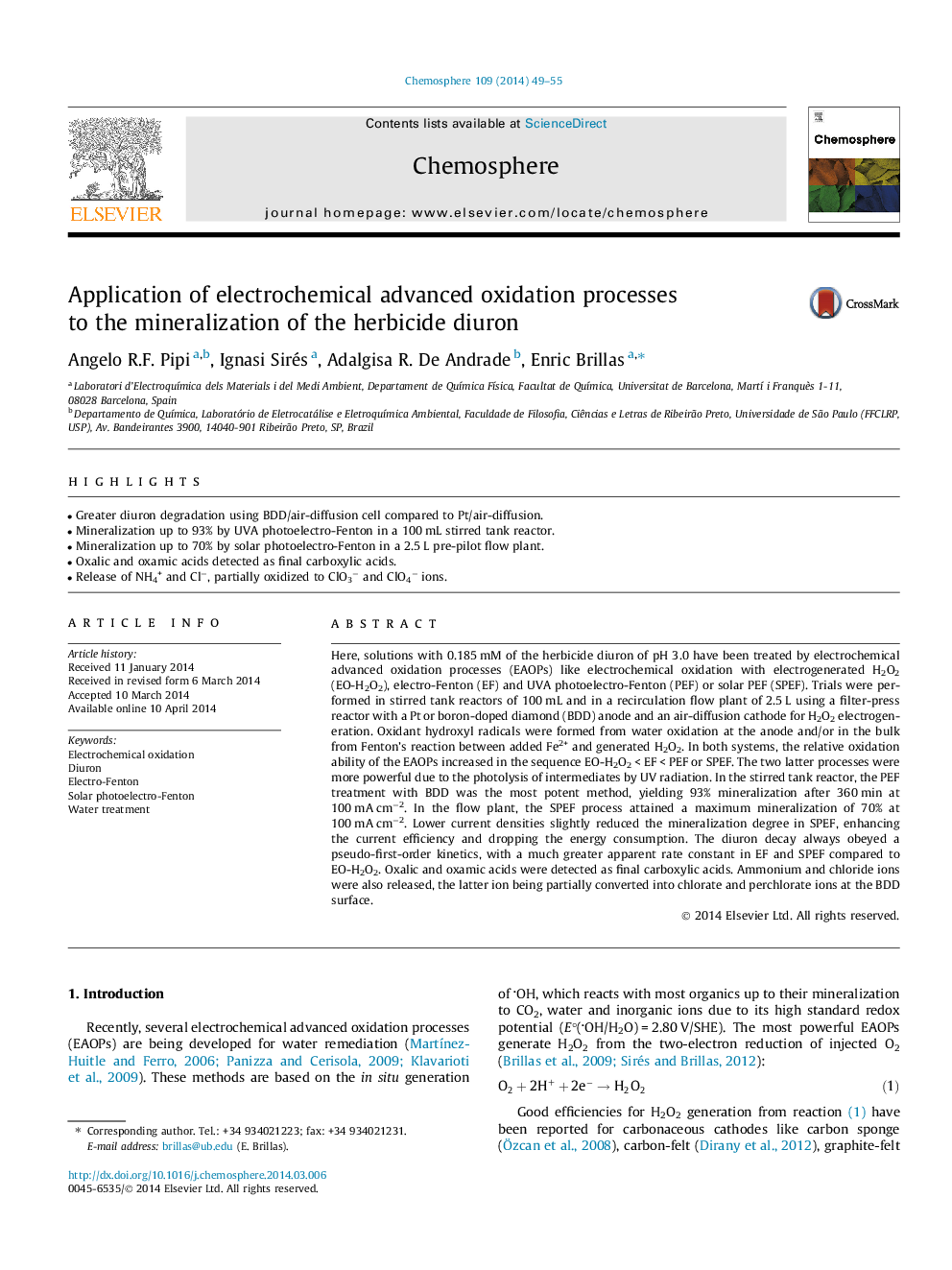| کد مقاله | کد نشریه | سال انتشار | مقاله انگلیسی | نسخه تمام متن |
|---|---|---|---|---|
| 6309012 | 1618862 | 2014 | 7 صفحه PDF | دانلود رایگان |
- Greater diuron degradation using BDD/air-diffusion cell compared to Pt/air-diffusion.
- Mineralization up to 93% by UVA photoelectro-Fenton in a 100Â mL stirred tank reactor.
- Mineralization up to 70% by solar photoelectro-Fenton in a 2.5Â L pre-pilot flow plant.
- Oxalic and oxamic acids detected as final carboxylic acids.
- Release of NH4+ and Clâ, partially oxidized to ClO3â and ClO4â ions.
Here, solutions with 0.185Â mM of the herbicide diuron of pH 3.0 have been treated by electrochemical advanced oxidation processes (EAOPs) like electrochemical oxidation with electrogenerated H2O2 (EO-H2O2), electro-Fenton (EF) and UVA photoelectro-Fenton (PEF) or solar PEF (SPEF). Trials were performed in stirred tank reactors of 100Â mL and in a recirculation flow plant of 2.5Â L using a filter-press reactor with a Pt or boron-doped diamond (BDD) anode and an air-diffusion cathode for H2O2 electrogeneration. Oxidant hydroxyl radicals were formed from water oxidation at the anode and/or in the bulk from Fenton's reaction between added Fe2+ and generated H2O2. In both systems, the relative oxidation ability of the EAOPs increased in the sequence EO-H2O2Â <Â EFÂ <Â PEF or SPEF. The two latter processes were more powerful due to the photolysis of intermediates by UV radiation. In the stirred tank reactor, the PEF treatment with BDD was the most potent method, yielding 93% mineralization after 360Â min at 100Â mAÂ cmâ2. In the flow plant, the SPEF process attained a maximum mineralization of 70% at 100Â mAÂ cmâ2. Lower current densities slightly reduced the mineralization degree in SPEF, enhancing the current efficiency and dropping the energy consumption. The diuron decay always obeyed a pseudo-first-order kinetics, with a much greater apparent rate constant in EF and SPEF compared to EO-H2O2. Oxalic and oxamic acids were detected as final carboxylic acids. Ammonium and chloride ions were also released, the latter ion being partially converted into chlorate and perchlorate ions at the BDD surface.
Journal: Chemosphere - Volume 109, August 2014, Pages 49-55
